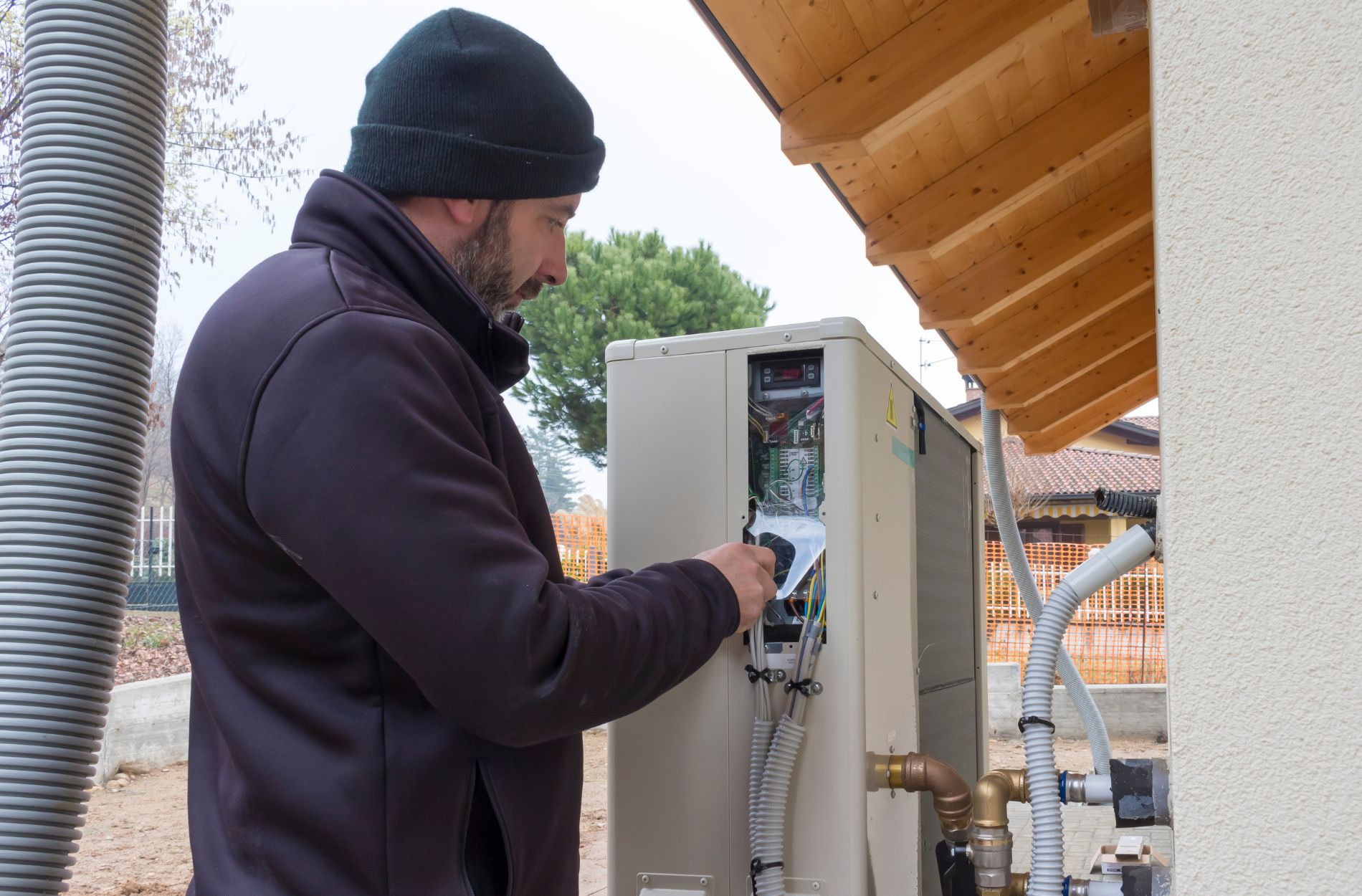Heat pumps are an essential part of keeping your home comfortable year-round. They provide both heating and cooling, making them incredibly versatile. However, like all HVAC systems, heat pumps can encounter problems that need professional attention.
Knowing the signs that your heat pump requires repair and understanding the repair process can help you take timely action to ensure your system operates efficiently.
Common Signs Your Heat Pump Needs Repair
Recognizing the signs that your heat pump needs repair can help you address problems before they become serious. One of the most common signs is unusual noises coming from the unit. If you hear grinding, banging, or squealing sounds, it’s time to call in our professionals to diagnose the issue. These noises often indicate worn-out components or something obstructing the fan.
Another sign is reduced heating or cooling performance. If your heat pump isn’t maintaining the desired temperature, there may be a problem with the compressor or refrigerant levels. You might also notice that some rooms are consistently warmer or cooler than others, which could indicate ductwork issues or a failing thermostat. Our technicians can assess these symptoms and offer the necessary repair solutions.
Additionally, an unexpected increase in your energy bills can signal that your heat pump isn’t working efficiently. If you haven’t significantly changed your usage and still see higher bills, it likely means your system is overworking due to an underlying issue. By paying attention to these signs and seeking timely repairs, you can maintain your heat pump’s efficiency and avoid more costly problems down the road.
Diagnostic Process: How Our Professionals Identify Issues
Our professionals use a detailed diagnostic process to identify the root cause of heat pump issues. The first step is a thorough visual inspection of the unit. Our technicians check for any obvious signs of wear and tear, such as damaged wires, leaking refrigerant, or obstructed airflow. This initial assessment helps to quickly identify any visible problems that may require immediate attention.
After the visual inspection, we use specialized diagnostic tools to examine the internal components. This includes testing electrical connections, measuring refrigerant levels, and checking the performance of the compressor and fan motors. By using advanced tools, our technicians can pinpoint issues that aren’t immediately visible, ensuring a comprehensive diagnosis.
The final step in our diagnostic process involves evaluating the system’s performance. We monitor the heat pump while it’s running to detect any irregularities in its operation. This can reveal problems such as short cycling, which could indicate an incorrectly sized unit or a failing component. Our professionals compile all the data gathered from these tests to provide a clear and accurate diagnosis, allowing them to recommend the most effective repair solutions to restore your heat pump’s functionality.
Steps Involved in Heat Pump Repair
Once the diagnostic process is complete, our professionals move on to the actual repair steps. The first step is always to switch off the power to ensure safety. Safety is our top priority, and this step helps protect both our technicians and your home from accidental damage or injuries.
Next, we disassemble the unit to access the faulty components. Depending on the issue, this might involve removing the fan, compressor, or other critical parts. If the problem involves a refrigerant leak, our professionals will locate and seal the leak before recharging the system with the appropriate refrigerant levels. For electrical issues, we carefully inspect and replace damaged wires or connections to restore efficient operation.
After the necessary repairs are made, we reassemble the unit and perform a thorough test to ensure everything is functioning correctly. This includes checking that the heat pump is cycling properly and providing consistent heating or cooling as needed. Our final inspection guarantees that your system is back to peak performance, giving you peace of mind and restoring your home’s comfort.
Maintaining Efficiency Post-Repair: Tips from Our Professionals
Maintaining your heat pump’s efficiency after a repair is essential for prolonging its lifespan and avoiding future issues. One of the simplest yet most effective maintenance tips we recommend is regular filter changes. Dirty filters restrict airflow, making your heat pump work harder and reducing its efficiency. Make it a habit to check and replace filters every one to three months.
Another important aspect is keeping the outdoor unit clean and free of debris. Leaves, dirt, and other debris can accumulate around the unit, obstructing airflow and leading to overheating. Regularly clean the area around the outdoor component and occasionally wash the coils to remove any built-up grime. This helps ensure optimal airflow and efficient operation.
Scheduling regular maintenance check-ups with our professionals is another key way to maintain efficiency. These check-ups allow us to catch minor issues before they turn into major problems. Our technicians can calibrate your system, check refrigerant levels, and inspect electrical components to ensure everything is working as it should.
Conclusion
Proper heat pump repair and maintenance are essential for ensuring your system’s longevity and efficiency. From recognizing common signs of problems to understanding the detailed diagnostic and repair processes, being informed helps you take timely action.
If you notice any signs that your heat pump needs repair or if it’s time for a routine check-up, don’t hesitate to contact Affordable Heating & Cooling. Our experienced technicians are ready to provide the expert service you need. Call us today to schedule your heat pump repair in Tecumseh and experience the difference in quality and reliability!




